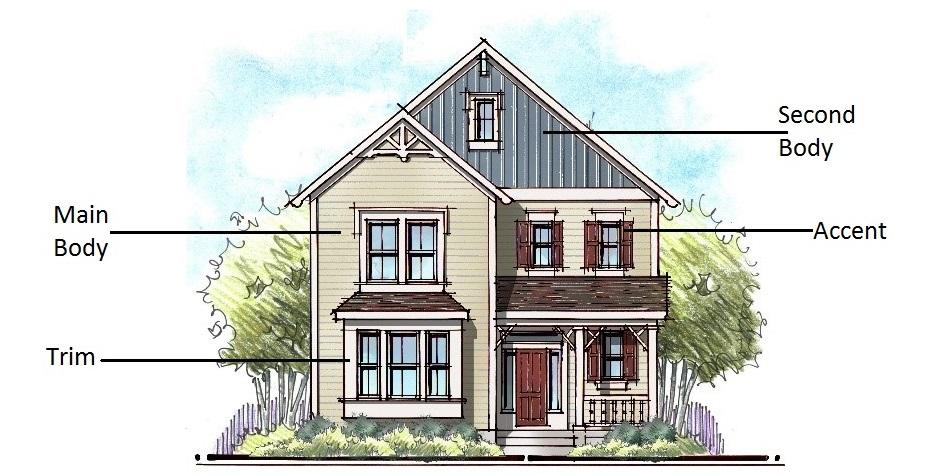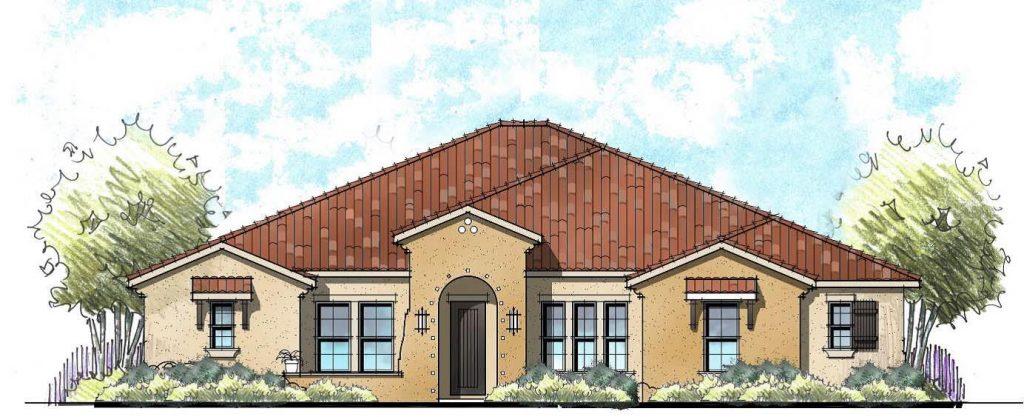Color Cues: Tips for Choosing Exterior Colors
Does the thought of choosing exterior colors for your home cause you panic?
Let’s adjust the way we think about color on our homes. Many homeowners typically go for a body color, trim color and call it a day. May I suggest a more intriguing school of thought?
Consider selecting 4 colors for the house: Main Body, Second Body, Accent and Trim.

The main body color sets the tone for the rest of the house. The majority of the home, including sides and rear, is considered the main body. The second body color typically consists of a defining architectural element, such as an entry feature or change in material (see the above diagram how the horizontal lap siding transitions to board and batten).

If you are feeling timid about selecting paint color for the body of the house, you can pick subtle neutrals and still let your personality shine through with an accent color – think black, red or cobalt blue. The small pop of color on shutters, the front door and architectural louvres allow you some freedom of expression while staying grounded.
Speaking of the front door, consider a separate color for this element as well to make a statement. Why not? I once rented in a beach house with a lime green front door that was stunning and perfect for its coastal location.
Lastly, let’s talk trim. The trim ties everything together. Don’t feel obligated to stick with some varying shade of white or beige if it doesn’t make sense for the house. The trim color should complement the entire palette. Use it around windows, fascia and eaves. And don’t forget the columns! Columns should always be painted the trim color to help define the porch they are supporting. With the right palette, you can even go darker than the body if your window mullions are dark. (As a side note, let’s not combine dark trim with white windows. It’s a bit like wearing white socks with black pants, only longer lasting!)

Here are few more considerations for choosing exterior colors:
- Gather lots of samples from your paint store and look at them outside in natural light.
- Experiment pairing colors together until you find the right combination.
- Keep in mind that dark rich hues will fade over time, so don’t be afraid that you are choosing a color that is too dark.
- Most importantly, ensure the main body and second body colors work in harmony, and that the trim and accent colors complement both.
Color adds depth and dimension to a house and allows others to see your home as you want them to. Have fun and let your personality really shine through!
